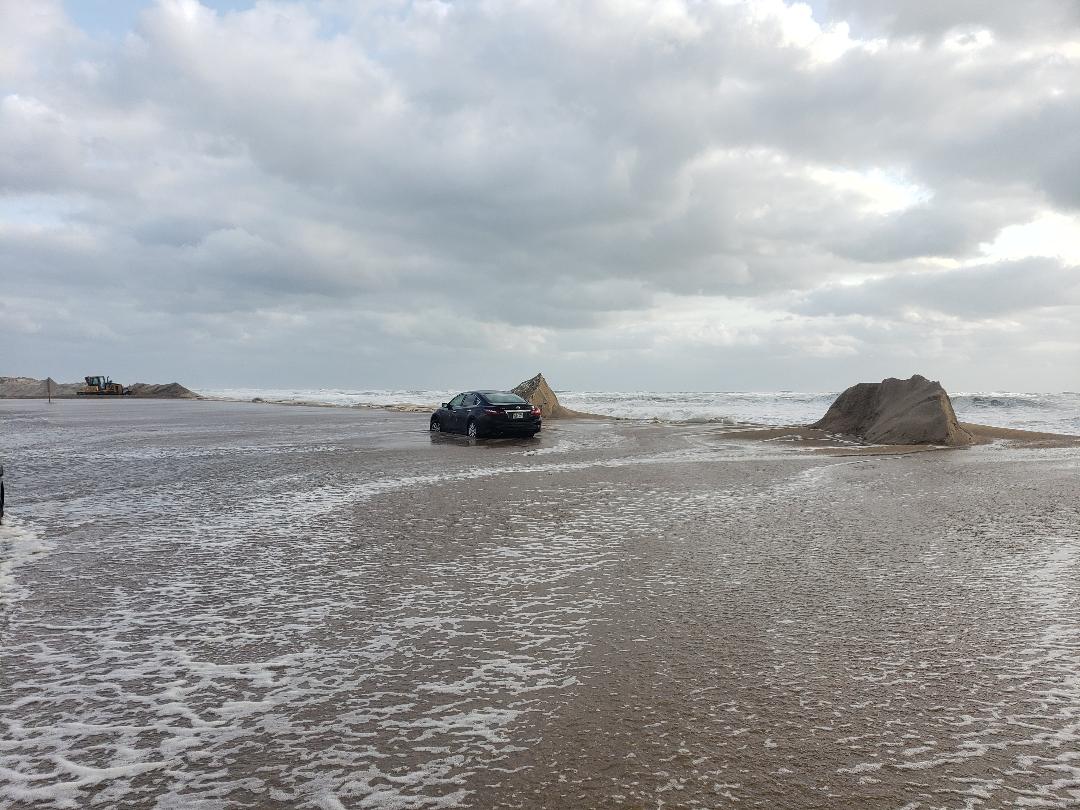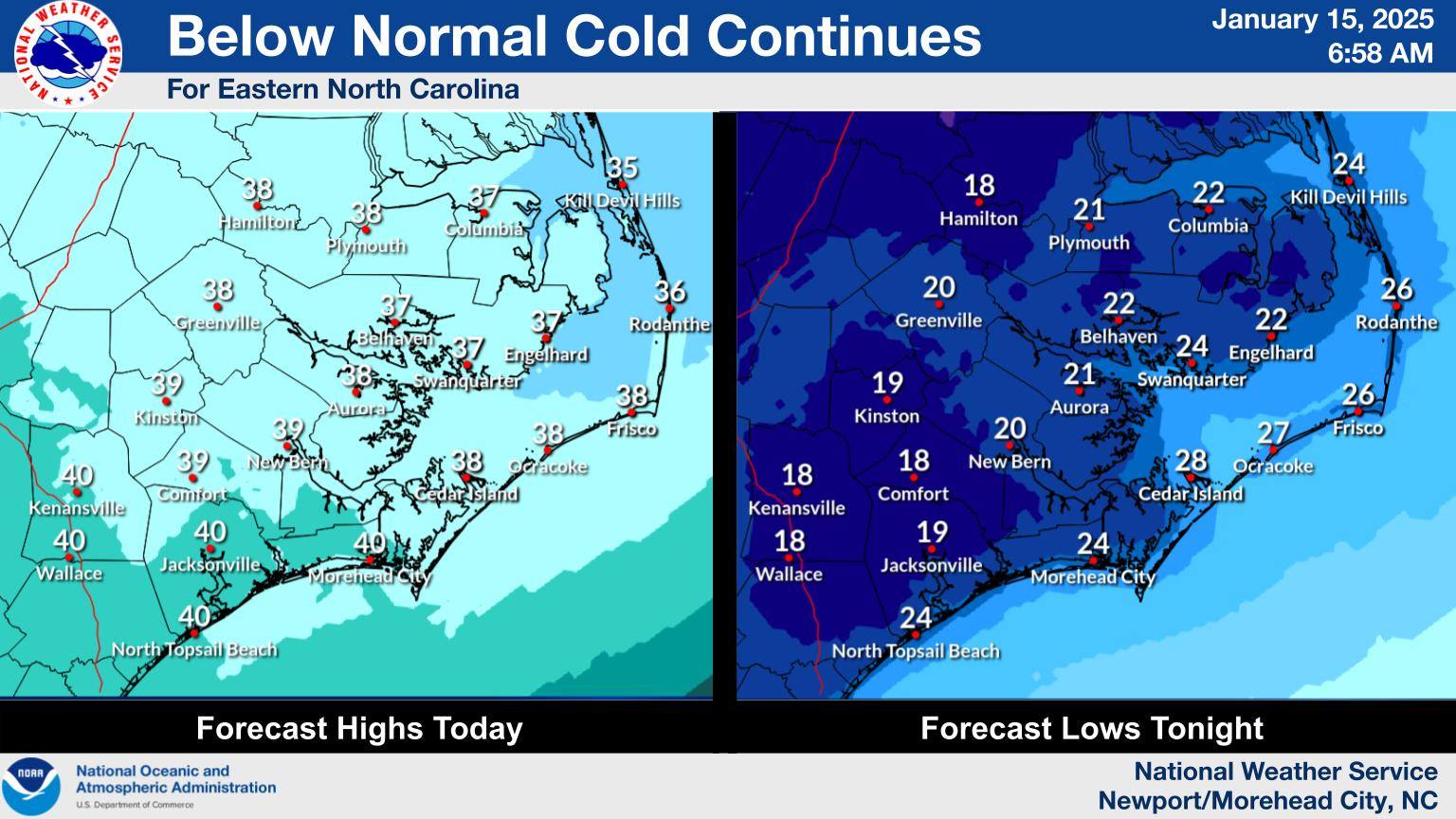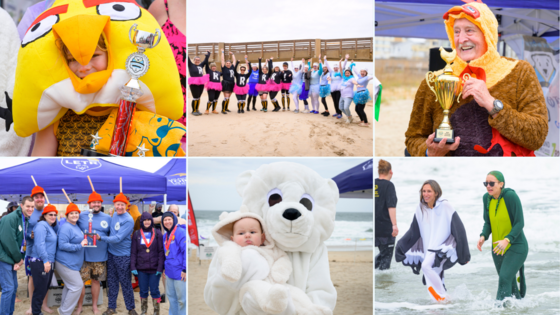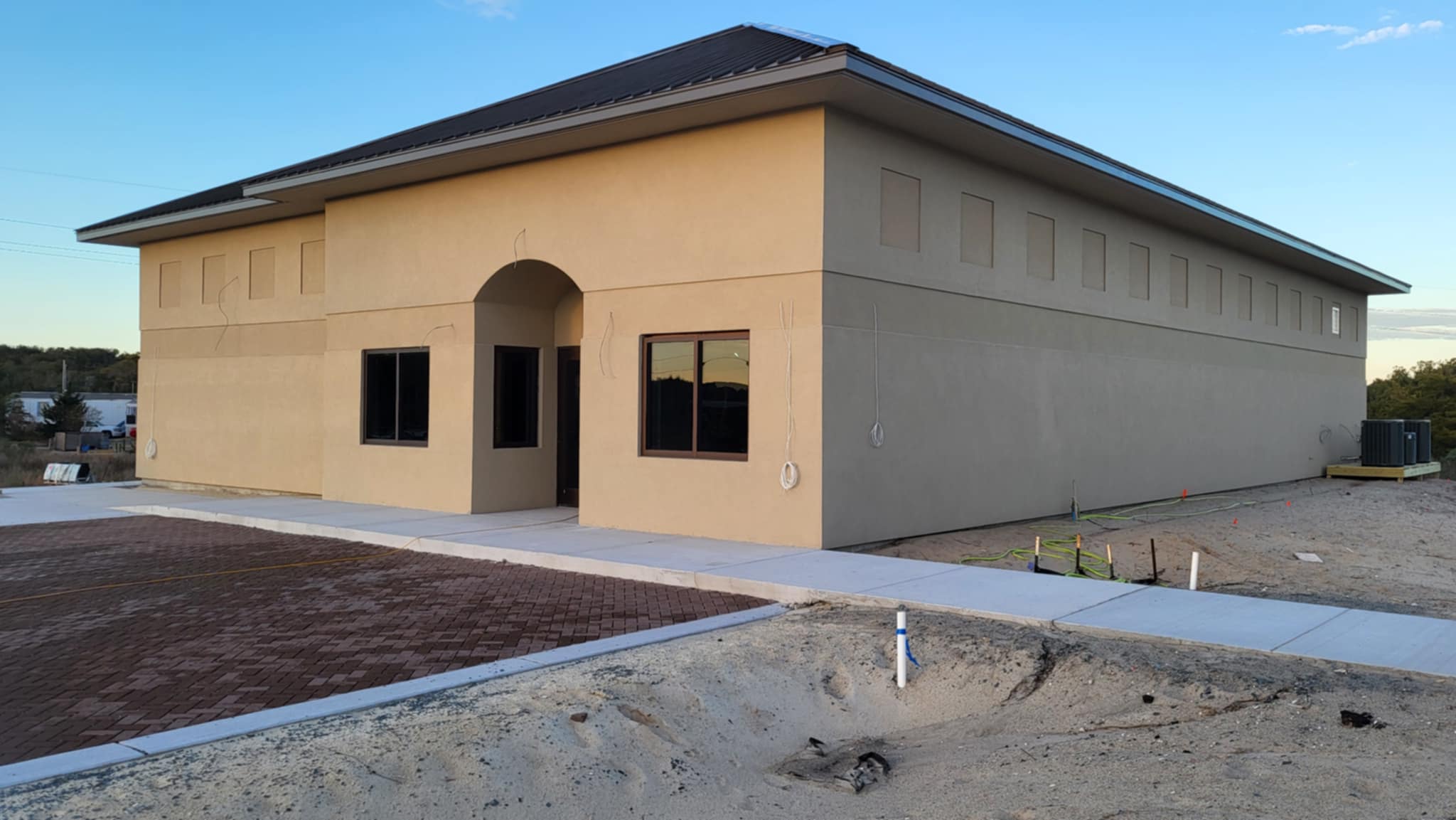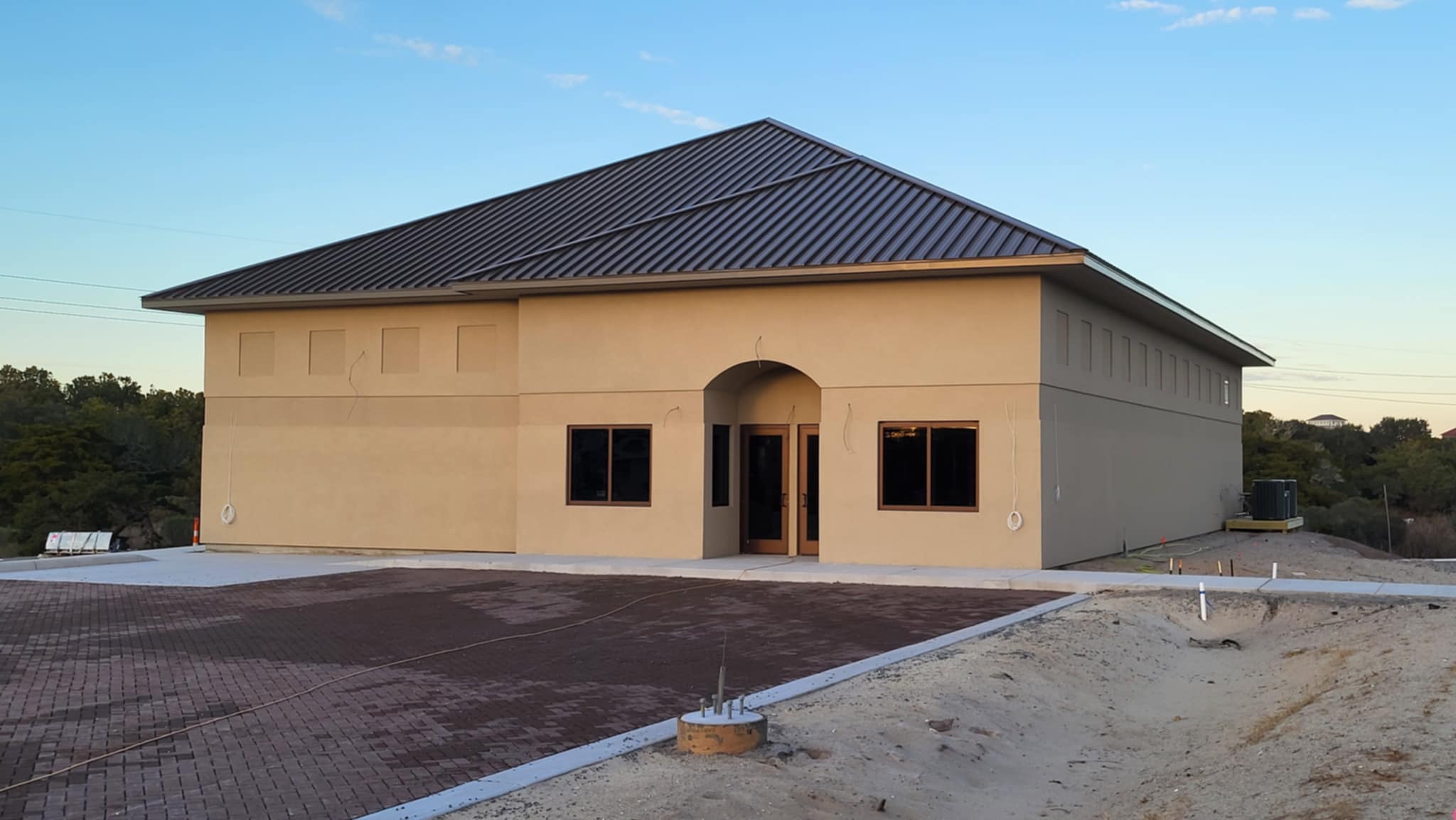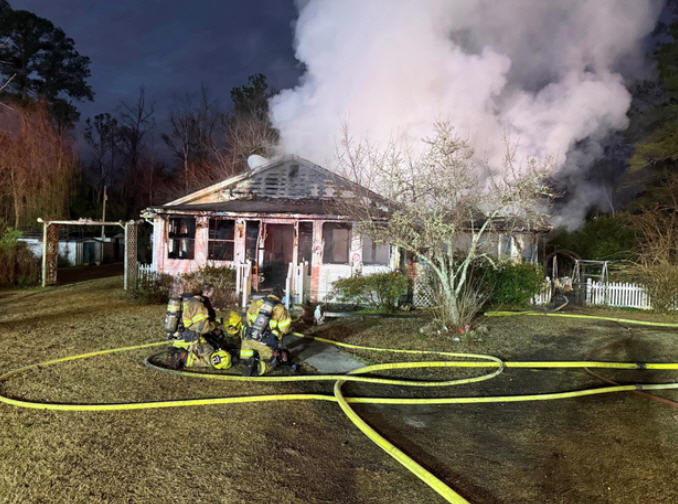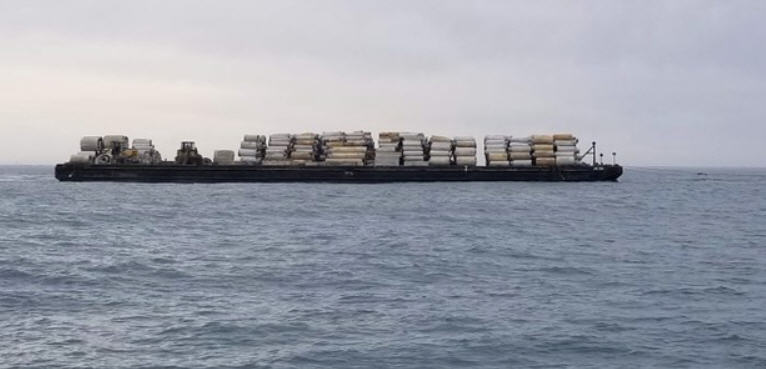Temple gathered information about building a boat from scratch, contacting and visiting other non-profit organizations that have done this. When he shared his ideas with a group of enthusiastic friends and community members, he realized he had started a building project. “This thing just took on a life of its own,” he said. “Everyone I’ve mentioned it to thinks it’s a great idea.” Ocracoke Foundation executive director Robin Payne encouraged Temple to put together a task force to explore the possibilities, then partner with local non-profits and Ocracoke School. The new schooner won’t be a replica of any particular boat, but it will serve as a tribute to the vessels and sailors that plied these waters for hundreds of years. Philip Howard has researched naming the new boat “Paragon” after an Ocracoke-built schooner that sailed from 1839-1885. Many stories have been passed down about the Paragon and her salty captain/owner, James Horatio Williams, including the interesting fact that they were in Charleston Harbor in South Carolina when the Confederacy fired on Fort Sumter on April 12, 1861. Fearing that his vessel would be commandeered for the ensuing war, Capt. Williams slipped out of Charleston on a dark, rainy night and set sail for Ocracoke Inlet. He surprised his crew by sailing right past the island and on up the Roanoke River, where he buried the sails ashore and sank the schooner. Eighteen months after the war was over, he re-floated the Paragon and it sailed for many more years until it was lost on Frying Pan Shoal in 1885. With the upcoming sesquicentennial of the Civil War this year, there is renewed interest in Ocracoke’s wartime heritage, and the original Paragon’s story will be another source of visitor information. Jimmy Amspacher guided the group to the decision to build a traditional, gaff-rigged North Carolina sharpie schooner. Sharpies were popular boats in this area from their development in the late 19th century right up until World War II. The sharpie design that he suggested will be approximately 50 feet long and will be built to United States Coast Guard specifications to carry 20 to 30 passengers. Amspacher grew up in Atlantic, N.C., and is considered an authority on North Carolina traditional boatbuilding. He builds and restores wooden boats and travels the state for boatbuilding demonstrations. He has visited Ocracoke School several times to share his skills with students, helping them to build an authentic flat-bottomed skiff in just one week. He’s taught them similar building methods in a model boatbuilding class. Local builder Tom Pahl and Ocracoke School industrial arts teacher Roger Meacham are excited to help community members and students become a part of the building project. Philip Howard is donating the use of his property on Highway 12 for the duration of the building project. The task force plans to have signs, brochures, donation opportunities, and the beginnings of a shipyard in place by June. FOR MORE INFORMATION Ocracoke Foundation, Inc., please visit www.ocracokefoundation.org Ocracoke Island, please visit www.ocracokevillage.com.
By SUNDAE HORN
By SUNDAE HORN
A small group of Ocracoke residents gathered this spring to eat oysters and plan a community boatbuilding project. Among them were boat captain Rob Temple, local historian Philip Howard, local builder Tom Pahl, and Ocracoke School industrial arts teacher Roger Meacham.
Last month, those four men met with Jimmy Amspacher, a master shipwright from Marshallberg, N.C., in Down East Carteret County. With Amspacher’s help, the group hopes to begin construction on Ocracoke’s own schooner by early summer.
During construction, community members, visitors, and Ocracoke School students will be able to participate in the building project, under the direction of Amspacher. After its completion, the schooner will dock at the Community Square. It will be available for educational tours and private charters and will sail to other ports as a goodwill ambassador for Ocracoke. It will also provide training and employment for people interested in the increasingly popular field of heritage tourism.
Heritage tourism is a significant segment of the travel and tourism industry, and it includes historic, cultural, and natural attractions. Studies have shown that visitors find it important to experience authentic aspects of a destination, and they want to feel connected to the heritage of places they visit.
A community-built traditional boat will allow visitors to experience an important part of Ocracoke’s past, and pass along boatbuilding skills to a new generation of Ocracokers.
The boatbuilding task force will need to raise funds and find corporate sponsors during the building phase, but the vessel is expected to support itself through charter fees after its completion.
Rob Temple launched the boat-building project after realizing the need for a community-owned historic vessel. For 17 years, Temple sailed the traditional gaff-rigged schooner Windfall in Ocracoke waters until he replaced it with the smaller schooner Windfall II last May.
The original Windfall carried 30 passengers, but the new one carries only six passengers at a time. Although he is happy with his new boat, Temple has heard from many people that they miss the majestic site of a large traditional vessel. They also miss its carrying capacity for groups and private charters.
That got him thinking about the need for a traditional vessel at Ocracoke’s Community Square docks in the heart of the village’s historic district.
“I talked to Robin Payne from the Ocracoke Foundation about their revitalization project for the Square,” Temple said. “And it seemed a perfect fit that the docks should have a traditional boat. And with the Civil War sesquicentennial starting now, we should feature more education on Ocracoke’s seafaring past.”
Ocracoke Foundation, Inc. in a non-profit organization dedicated to helping incubate sustainable ideas and projects in the community.
A small group of Ocracoke residents gathered this spring to eat oysters and plan a community boatbuilding project. Among them were boat captain Rob Temple, local historian Philip Howard, local builder Tom Pahl, and Ocracoke School industrial arts teacher Roger Meacham.
Last month, those four men met with Jimmy Amspacher, a master shipwright from Marshallberg, N.C., in Down East Carteret County. With Amspacher’s help, the group hopes to begin construction on Ocracoke’s own schooner by early summer.
During construction, community members, visitors, and Ocracoke School students will be able to participate in the building project, under the direction of Amspacher. After its completion, the schooner will dock at the Community Square. It will be available for educational tours and private charters and will sail to other ports as a goodwill ambassador for Ocracoke. It will also provide training and employment for people interested in the increasingly popular field of heritage tourism.
Heritage tourism is a significant segment of the travel and tourism industry, and it includes historic, cultural, and natural attractions. Studies have shown that visitors find it important to experience authentic aspects of a destination, and they want to feel connected to the heritage of places they visit.
A community-built traditional boat will allow visitors to experience an important part of Ocracoke’s past, and pass along boatbuilding skills to a new generation of Ocracokers.
The boatbuilding task force will need to raise funds and find corporate sponsors during the building phase, but the vessel is expected to support itself through charter fees after its completion.
Rob Temple launched the boat-building project after realizing the need for a community-owned historic vessel. For 17 years, Temple sailed the traditional gaff-rigged schooner Windfall in Ocracoke waters until he replaced it with the smaller schooner Windfall II last May.
The original Windfall carried 30 passengers, but the new one carries only six passengers at a time. Although he is happy with his new boat, Temple has heard from many people that they miss the majestic site of a large traditional vessel. They also miss its carrying capacity for groups and private charters.
That got him thinking about the need for a traditional vessel at Ocracoke’s Community Square docks in the heart of the village’s historic district.
“I talked to Robin Payne from the Ocracoke Foundation about their revitalization project for the Square,” Temple said. “And it seemed a perfect fit that the docks should have a traditional boat. And with the Civil War sesquicentennial starting now, we should feature more education on Ocracoke’s seafaring past.”
Ocracoke Foundation, Inc. in a non-profit organization dedicated to helping incubate sustainable ideas and projects in the community.
A small group of Ocracoke residents gathered this spring to eat oysters and plan a community boatbuilding project. Among them were boat captain Rob Temple, local historian Philip Howard, local builder Tom Pahl, and Ocracoke School industrial arts teacher Roger Meacham.
Last month, those four men met with Jimmy Amspacher, a master shipwright from Marshallberg, N.C., in Down East Carteret County. With Amspacher’s help, the group hopes to begin construction on Ocracoke’s own schooner by early summer.
During construction, community members, visitors, and Ocracoke School students will be able to participate in the building project, under the direction of Amspacher. After its completion, the schooner will dock at the Community Square. It will be available for educational tours and private charters and will sail to other ports as a goodwill ambassador for Ocracoke. It will also provide training and employment for people interested in the increasingly popular field of heritage tourism.
Heritage tourism is a significant segment of the travel and tourism industry, and it includes historic, cultural, and natural attractions. Studies have shown that visitors find it important to experience authentic aspects of a destination, and they want to feel connected to the heritage of places they visit.
A community-built traditional boat will allow visitors to experience an important part of Ocracoke’s past, and pass along boatbuilding skills to a new generation of Ocracokers.
The boatbuilding task force will need to raise funds and find corporate sponsors during the building phase, but the vessel is expected to support itself through charter fees after its completion.
Rob Temple launched the boat-building project after realizing the need for a community-owned historic vessel. For 17 years, Temple sailed the traditional gaff-rigged schooner Windfall in Ocracoke waters until he replaced it with the smaller schooner Windfall II last May.
The original Windfall carried 30 passengers, but the new one carries only six passengers at a time. Although he is happy with his new boat, Temple has heard from many people that they miss the majestic site of a large traditional vessel. They also miss its carrying capacity for groups and private charters.
That got him thinking about the need for a traditional vessel at Ocracoke’s Community Square docks in the heart of the village’s historic district.
“I talked to Robin Payne from the Ocracoke Foundation about their revitalization project for the Square,” Temple said. “And it seemed a perfect fit that the docks should have a traditional boat. And with the Civil War sesquicentennial starting now, we should feature more education on Ocracoke’s seafaring past.”
Ocracoke Foundation, Inc. in a non-profit organization dedicated to helping incubate sustainable ideas and projects in the community.
Temple gathered information about building a boat from scratch, contacting and visiting other non-profit organizations that have done this. When he shared his ideas with a group of enthusiastic friends and community members, he realized he had started a building project.
“This thing just took on a life of its own,” he said. “Everyone I’ve mentioned it to thinks it’s a great idea.”
Ocracoke Foundation executive director Robin Payne encouraged Temple to put together a task force to explore the possibilities, then partner with local non-profits and Ocracoke School.
The new schooner won’t be a replica of any particular boat, but it will serve as a tribute to the vessels and sailors that plied these waters for hundreds of years.
Philip Howard has researched naming the new boat “Paragon” after an Ocracoke-built schooner that sailed from 1839-1885. Many stories have been passed down about the Paragon and her salty captain/owner, James Horatio Williams, including the interesting fact that they were in Charleston Harbor in South Carolina when the Confederacy fired on Fort Sumter on April 12, 1861.
Fearing that his vessel would be commandeered for the ensuing war, Capt. Williams slipped out of Charleston on a dark, rainy night and set sail for Ocracoke Inlet. He surprised his crew by sailing right past the island and on up the Roanoke River, where he buried the sails ashore and sank the schooner.
Eighteen months after the war was over, he re-floated the Paragon and it sailed for many more years until it was lost on Frying Pan Shoal in 1885.
With the upcoming sesquicentennial of the Civil War this year, there is renewed interest in Ocracoke’s wartime heritage, and the original Paragon’s story will be another source of visitor information.
Jimmy Amspacher guided the group to the decision to build a traditional, gaff-rigged North Carolina sharpie schooner. Sharpies were popular boats in this area from their development in the late 19th century right up until World War II. The sharpie design that he suggested will be approximately 50 feet long and will be built to United States Coast Guard specifications to carry 20 to 30 passengers.
Amspacher grew up in Atlantic, N.C., and is considered an authority on North Carolina traditional boatbuilding. He builds and restores wooden boats and travels the state for boatbuilding demonstrations. He has visited Ocracoke School several times to share his skills with students, helping them to build an authentic flat-bottomed skiff in just one week. He’s taught them similar building methods in a model boatbuilding class.
Local builder Tom Pahl and Ocracoke School industrial arts teacher Roger Meacham are excited to help community members and students become a part of the building project.
Philip Howard is donating the use of his property on Highway 12 for the duration of the building project. The task force plans to have signs, brochures, donation opportunities, and the beginnings of a shipyard in place by June.
FOR MORE INFORMATION
Ocracoke Foundation, Inc., please visit www.ocracokefoundation.org
Ocracoke Island, please visit www.ocracokevillage.com.
Temple gathered information about building a boat from scratch, contacting and visiting other non-profit organizations that have done this. When he shared his ideas with a group of enthusiastic friends and community members, he realized he had started a building project.
“This thing just took on a life of its own,” he said. “Everyone I’ve mentioned it to thinks it’s a great idea.”
Ocracoke Foundation executive director Robin Payne encouraged Temple to put together a task force to explore the possibilities, then partner with local non-profits and Ocracoke School.
The new schooner won’t be a replica of any particular boat, but it will serve as a tribute to the vessels and sailors that plied these waters for hundreds of years.
Philip Howard has researched naming the new boat “Paragon” after an Ocracoke-built schooner that sailed from 1839-1885. Many stories have been passed down about the Paragon and her salty captain/owner, James Horatio Williams, including the interesting fact that they were in Charleston Harbor in South Carolina when the Confederacy fired on Fort Sumter on April 12, 1861.
Fearing that his vessel would be commandeered for the ensuing war, Capt. Williams slipped out of Charleston on a dark, rainy night and set sail for Ocracoke Inlet. He surprised his crew by sailing right past the island and on up the Roanoke River, where he buried the sails ashore and sank the schooner.
Eighteen months after the war was over, he re-floated the Paragon and it sailed for many more years until it was lost on Frying Pan Shoal in 1885.
With the upcoming sesquicentennial of the Civil War this year, there is renewed interest in Ocracoke’s wartime heritage, and the original Paragon’s story will be another source of visitor information.
Jimmy Amspacher guided the group to the decision to build a traditional, gaff-rigged North Carolina sharpie schooner. Sharpies were popular boats in this area from their development in the late 19th century right up until World War II. The sharpie design that he suggested will be approximately 50 feet long and will be built to United States Coast Guard specifications to carry 20 to 30 passengers.
Amspacher grew up in Atlantic, N.C., and is considered an authority on North Carolina traditional boatbuilding. He builds and restores wooden boats and travels the state for boatbuilding demonstrations. He has visited Ocracoke School several times to share his skills with students, helping them to build an authentic flat-bottomed skiff in just one week. He’s taught them similar building methods in a model boatbuilding class.
Local builder Tom Pahl and Ocracoke School industrial arts teacher Roger Meacham are excited to help community members and students become a part of the building project.
Philip Howard is donating the use of his property on Highway 12 for the duration of the building project. The task force plans to have signs, brochures, donation opportunities, and the beginnings of a shipyard in place by June.
FOR MORE INFORMATION
Ocracoke Foundation, Inc., please visit www.ocracokefoundation.org
Ocracoke Island, please visit www.ocracokevillage.com.
Temple gathered information about building a boat from scratch, contacting and visiting other non-profit organizations that have done this. When he shared his ideas with a group of enthusiastic friends and community members, he realized he had started a building project.
“This thing just took on a life of its own,” he said. “Everyone I’ve mentioned it to thinks it’s a great idea.”
Ocracoke Foundation executive director Robin Payne encouraged Temple to put together a task force to explore the possibilities, then partner with local non-profits and Ocracoke School.
The new schooner won’t be a replica of any particular boat, but it will serve as a tribute to the vessels and sailors that plied these waters for hundreds of years.
Philip Howard has researched naming the new boat “Paragon” after an Ocracoke-built schooner that sailed from 1839-1885. Many stories have been passed down about the Paragon and her salty captain/owner, James Horatio Williams, including the interesting fact that they were in Charleston Harbor in South Carolina when the Confederacy fired on Fort Sumter on April 12, 1861.
Fearing that his vessel would be commandeered for the ensuing war, Capt. Williams slipped out of Charleston on a dark, rainy night and set sail for Ocracoke Inlet. He surprised his crew by sailing right past the island and on up the Roanoke River, where he buried the sails ashore and sank the schooner.
Eighteen months after the war was over, he re-floated the Paragon and it sailed for many more years until it was lost on Frying Pan Shoal in 1885.
With the upcoming sesquicentennial of the Civil War this year, there is renewed interest in Ocracoke’s wartime heritage, and the original Paragon’s story will be another source of visitor information.
Jimmy Amspacher guided the group to the decision to build a traditional, gaff-rigged North Carolina sharpie schooner. Sharpies were popular boats in this area from their development in the late 19th century right up until World War II. The sharpie design that he suggested will be approximately 50 feet long and will be built to United States Coast Guard specifications to carry 20 to 30 passengers.
Amspacher grew up in Atlantic, N.C., and is considered an authority on North Carolina traditional boatbuilding. He builds and restores wooden boats and travels the state for boatbuilding demonstrations. He has visited Ocracoke School several times to share his skills with students, helping them to build an authentic flat-bottomed skiff in just one week. He’s taught them similar building methods in a model boatbuilding class.
Local builder Tom Pahl and Ocracoke School industrial arts teacher Roger Meacham are excited to help community members and students become a part of the building project.
Philip Howard is donating the use of his property on Highway 12 for the duration of the building project. The task force plans to have signs, brochures, donation opportunities, and the beginnings of a shipyard in place by June.
FOR MORE INFORMATION
Ocracoke Foundation, Inc., please visit www.ocracokefoundation.org
Ocracoke Island, please visit www.ocracokevillage.com.
Subject
Name
(required, will not be published)
(required, will not be published)
City :
State :
Your Comments:
May be posted on the Letters to the Editor page at the discretion of the editor.
May be posted on the Letters to the Editor page at the discretion of the editor.
May be posted on the Letters to the Editor page at the discretion of the editor.
May be posted on the Letters to the Editor page at the discretion of the editor.





